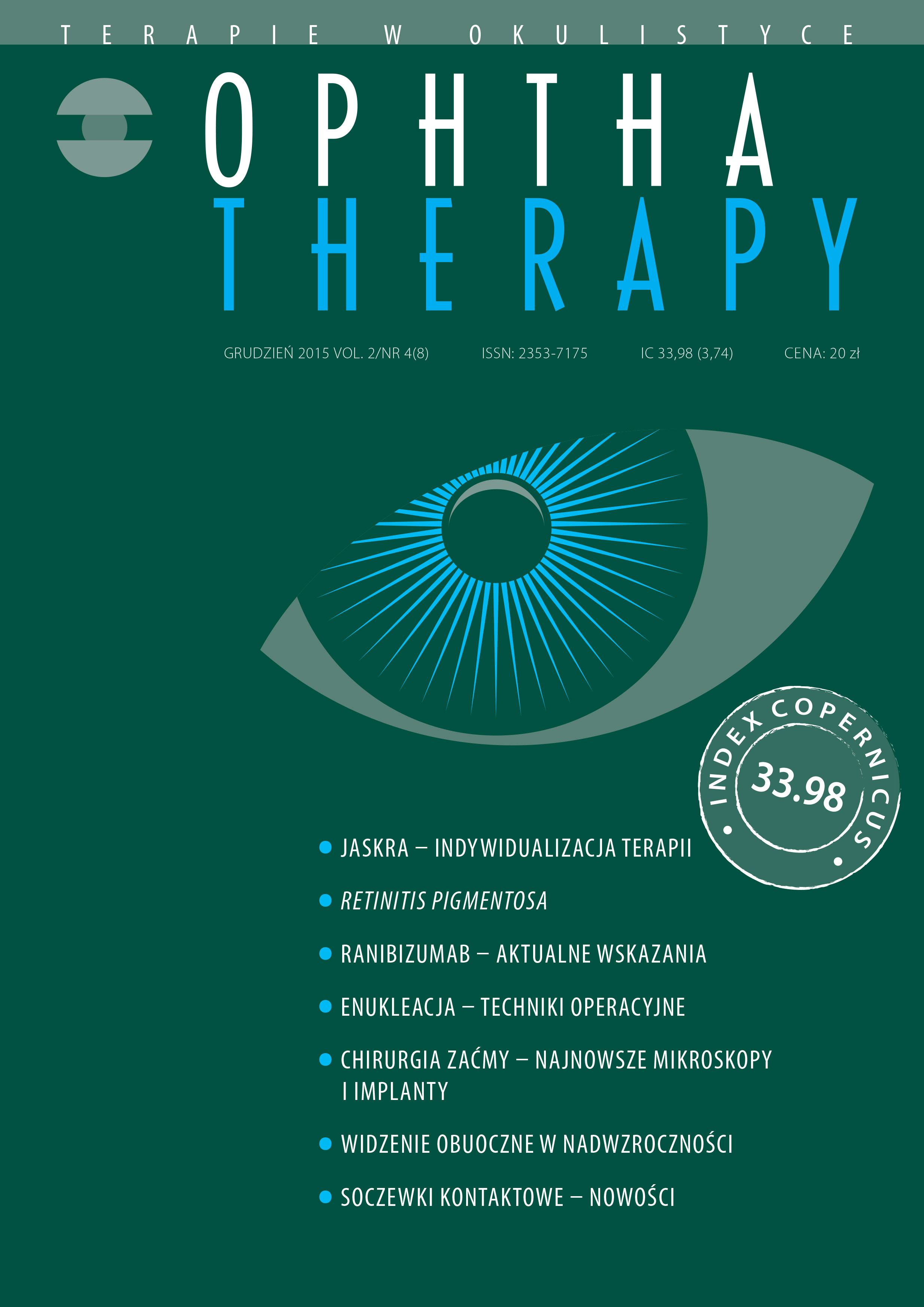Pseudophakia after cataract surgery does not have to limit the patient. Trifocal lens as a solution for presbyopia
Main Article Content
Abstract
Multifocal intraocular lenses are a new therapeutic option in cataract surgery. Innovative technological solutions reduce the need for spectacle correction for far and near vision. At the same time, the use of patented solutions in the Alcon AcrySof® IQ PanOptix™ lens allow for greater independence of the quality of near, intermediate and far vision from light intensity and pupil diameter.
Downloads
Article Details

This work is licensed under a Creative Commons Attribution-NonCommercial-NoDerivatives 4.0 International License.
Copyright: © Medical Education sp. z o.o. License allowing third parties to copy and redistribute the material in any medium or format and to remix, transform, and build upon the material, provided the original work is properly cited and states its license.
Address reprint requests to: Medical Education, Marcin Kuźma (marcin.kuzma@mededu.pl)
References
2. Apple DJ, Sims J. Harold Ridley and the invention of the intraocular lens. Surv Ophthalmol. 1996; 40(4): 279-92.
3. Haigis W. Challenges and approaches in modern biometry and IOL calculation. Saudi J Ophthalmol. 2012; 26(1): 7-12.
4. Gatinel D, Houbrechts Y. Comparison of bifocal and trifocal diffractive and refractive intraocular lenses using an optical bench. J Cataract Refract Surg. 2013; 39(7): 1093-9.
5. Neil B. Computer vision syndrome. Optometric Management 2002; December Issue. http://www.optometricmanagement.com/magazineviewer.aspx?magDated=200212.
6. Charness N, Dijkstra K, Jastrzembski T et al. Monitor Viewing Distance for Younger and Older Workers. Human Factors and Ergonomics Society Annual Meeting Proceedings. 2008; 52(19): 1614-7.
7. Gatinel D, Pagnoulle C, Houbrechts Y et al. Design and qualification of a diffractive trifocal optical profile for intraocular lenses. J Cataract Refract Surg. 2011; 37(11): 2060-7.
8. Linnola RJ, Sund M, Ylönen R et al. Adhesion of soluble fibronectin, laminin, and collagen type IV to intraocular lens materials. J Cataract Refract Surg. 1999; 25(11): 1486-91.
9. Ursell PG, Spalton DJ, Pande MV et al. Relationship between intraocular lens biomaterials and posterior capsule opacification. J Cataract Refract Surg. 1998; 24(3): 352-60.
10. Auffarth GU, Golescu A, Becker KA et al. Quantification of posterior capsule opacification with round and sharp edge intraocular lenses. Ophthalmology. 2003; 110(4): 772-80.
11. Cionni RJ, Tsai JH. Color perception with AcrySof® IQ natural and AcrySof® IQ single-piece intraocular lenses under photopic and mesopic conditions. J Cataract Refract Surg. 2006; 32(2): 236-42.
12. Mainster MA. Violet and blue light blocking intraocular lenses: photoprotection versus photoreception. Br J Ophthalmol. 2006; 90(6): 784-92.
13. Schweitzer C, Colin J. Patient-Reported Difference following Implantation of a Blue Light-Filtering Aspheric Intraocular Lens and a UV-Filtering Aspheric Intraocular Lens. Case Rep Ophthalmol. 2013; 4(3): 248-51.

